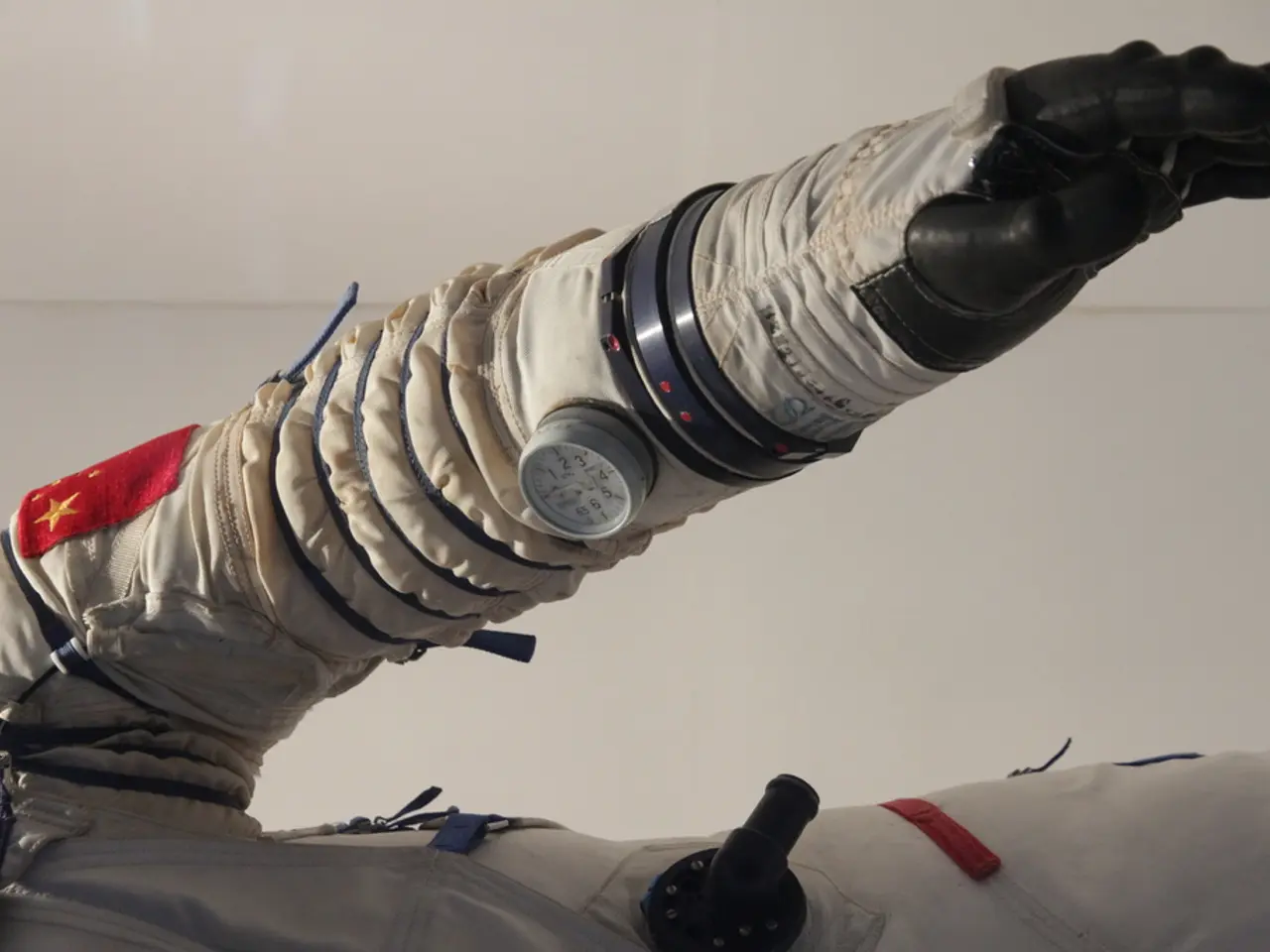Artificial robot skin surpasses human reaction times and adjusts its grip with the aid of fabric-driven tactility.
University at Buffalo Develops Revolutionary Fabric-Based Sensor for Enhanced Robotic and Prosthetic Grip Control
The University at Buffalo has made a significant breakthrough in the development of an electronic textile (E-textile) that mimics human skin's ability to sense pressure, slippage, and movement. This innovative fabric-based sensor could potentially revolutionise the field of robotics, prosthetics, and industrial grippers by providing tactile feedback that allows dynamic adjustment of grip force and slip detection.
The sensor functions like human skin, being flexible, highly sensitive, and uniquely capable of detecting not just pressure, but also subtle slip and movement of objects. Researchers mounted this sensor onto 3D-printed robotic fingers and connected them to a compliant gripper developed at UB. The system's reaction time is within the biological benchmarks set forth by human performance, with a range of 0.76 to 38 milliseconds.
This technology could have far-reaching implications in various areas. In robotic manipulation and automation, enhancing robotic grippers to detect object slippage and adjust grip strength automatically during in-hand manipulation could improve tasks like assembling products, packaging, pick-and-place jobs, and handling fragile items without crushing them.
In the realm of prosthetics, providing prosthetics with a sense of touch that enables users better grip control and object handling could significantly improve the functionality and natural feel of artificial limbs. The integration of this sensor allows the robotic gripper to detect slippage and dynamically adjust its compliance and grip force.
Moreover, the innovation could transform how robots interact with physical objects in collaborative environments like manufacturing, surgery, and prosthetics. Improving surgical robotic tools to provide tactile feedback is crucial for handling delicate tissues and enhancing precision in minimally invasive procedures.
Integrating sensors into wearable devices to monitor pressure and motion could also be beneficial for applications like assistive devices for visually impaired users, sports equipment monitoring, and smart backpacks. The stronger or faster the slip, the stronger the response is from the sensor.
The researchers plan to further test the system by integrating reinforcement learning to refine control algorithms. According to Jun Liu, assistant professor in UB's Department of Mechanical and Aerospace Engineering, the applications of this technology are exciting and could be used in various settings where humans and robots collaborate.
The textile sensor generates electricity through the tribovoltaic effect, a process similar to how human skin produces electrical signals when it comes into contact with objects. The system proved exceptionally responsive, with a reaction time comparable to human touch receptors. This capability enables robots and prosthetics to handle objects more delicately and dexterously, similar to human touch.
In summary, this fabric-based tactile sensor provides critical feedback that brings robotic and prosthetic gripping capabilities closer to human-like performance, thereby expanding their utility in manufacturing, medical, assistive, and wearable technology fields. The innovation could potentially improve robotic surgery tools and prosthetic limbs, marking a notable step toward more sensitive and responsive machines, especially in settings that demand fine motor control.
- This revolutionary fabric-based sensor developed by the University at Buffalo, with its ability to mimic human skin's sensitivity, could potentially revolutionize not only robotics and prosthetics, but also industrial grippers by offering tactile feedback and slip detection.
- The integration of this sensor into various technologies, such as wearable devices, could have significant benefits, like enhanced monitoring of pressure and motion for visually impaired users, sports equipment, and smart backpacks.
- In the field of aerospace, this technology could improve surgical robotic tools by providing tactile feedback, which is essential for handling delicate tissues and enhancing precision in minimally invasive procedures.
- As robots and prosthetics utilize this technology, they become more capable of handling objects delicately and dexterously, imitating human touch, thanks to the sensor's electricity generation through the tribovoltaic effect.




